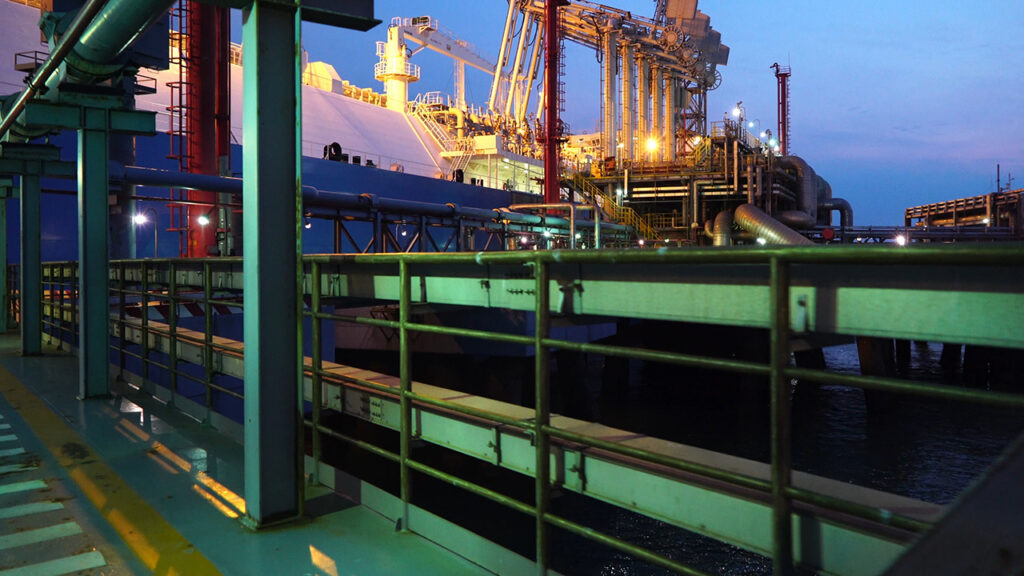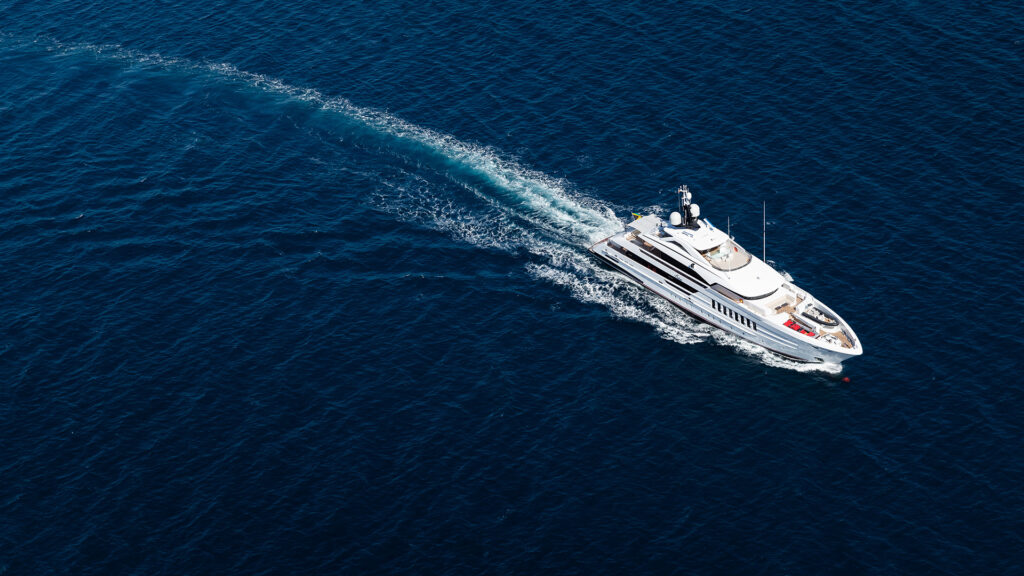
Comprehensively Yachts – HFW Yachting Industry Briefing, July 2021
Though the 2021 Mediterranean yacht season may have been a little late in its start, from the volume of new build and sale and purchase transactions we have been engaged with this year, it appears that the idea of yacht ownership is as popular, if not even more popular, than ever. Whether you are new to the industry or an old hand there will be something of interest to you in the following compilation of topical and legal developments to affect the yachting industry.
With the pandemic focussing the mind, more than ever, on the importance of having in place good environmental, social and governance (ESG) policies we will, over the next few briefings, endeavour to bring you commentary on series of relevant ESG related matters. We begin this series with a subject close to HFW’s heart, the She of the Sea Campaign and their efforts to increase the level of diversity and inclusion amongst yacht crew.
Next, sticking with the theme of yacht crew, we analyse a recent UK Employment Tribunal case which has once again shone a light on ensuring the need to handle the dismissal of yacht crew carefully. Following this, we consider the ongoing question of social security arrangements for those yacht crew resident in France and in particular look at the impact of Brexit on these arrangements.
With recent changes in French law designed to protect France’s seagrass meadows, it is likely that the yachting industry will see a number of prosecutions brought this summer against yachts anchoring or stopping in these newly established protected zones. Our Paris office analyse these changes in the law, what needs to be done to ensure compliance and the consequences of non-compliance.
Events earlier in the year in the Suez Canal and elsewhere around the Indian Ocean, including in Mozambique, have once again directed people to consider the question of security in this region. As the leading law firm in matters of piracy and complex security, we set out a brief summary of these events and their implications for yachts operating in the Indian Ocean.
Moving further east, our Australian colleagues provide an analysis of the likely future of Australian cabotage rules as they apply to large yachts wishing to operate commercially in Australia, a destination which surely, once travel restrictions are lifted, will become more popular than ever with the owners of large yachts.
Finally, following the commencement of proceedings in London in late 2020 in connection with the 2018 grounding in Greenland of the ICE ANGEL, our admiralty and crisis management experts consider the importance of adhering to a yacht’s Safety Management System, whether doing so is prescribed or voluntary.
ESG in yachting
Organisations are increasingly judged by those who would lend them money, engage them or work for them and, indeed, by society as a whole for their environmental, social and governance (ESG) practices. Like many, businesses and organisations across the yachting industry are grappling with what this means for them and with the plethora of initiatives, increasing demands and limited resources, it is sometimes hard to know where to start. In this article, we take a brief look at a subject at the core of the “S” in ESG, diversity and inclusion, or D&I as it is increasingly known.
We, like many large organisations, have in place developed ESG policies, including those focused on D&I, and we work hard to implement them. However, we recognise that even where you have the resources to develop and implement such policies, it can sometimes be difficult to feel that real progress is being made.
This is where organisations such as She of the Sea (www.sheofthesea.com) come in. An initiative focused on D&I within the yachting industry, She of the Sea is becoming an increasingly established force within our industry and is playing an invaluable role supporting businesses and yachts of all sizes in matters related to D&I.
Having been introduced to She of the Sea in the spring of 2019 and having been supporting them with pro bono advice ever since, we were delighted to become one of the first wave of signatories to their commitment pledge. By signing the pledge, HFW and our growing band of fellow signatories have aligned ourselves with the objectives and aspirations of She of the Sea, which in short are the facilitation of a high-performance industry that adds value to all major stakeholders, as well as the creation of access and opportunity for all career-focused yachting professionals.
SOS Annual Survey
In April 2021, She of the Sea launched their first annual survey and report, through which they hoped to showcase the campaign and the true status of D&I in yachting. What was clear from the data generated was that, while there is clearly encouraging enthusiasm for change within a broad cross section of the yachting industry, there is a great deal of progress to be made.
The data is, of course, only reflective of those organisations who contributed to the survey. However, data was submitted by respondents from all corners of the industry and it is therefore considered to be broadly illustrative of the industry as a whole. The data revealed that despite the growing number of women wishing to take up a professional career as yacht crew, less than 30% of current yacht crew are female. The percentage of women in leadership roles within yacht crew is smaller still and disappointingly there remains a real gender imbalance in the candidates being put forward for leadership roles. It was also made clear that many are yet to put in place the protective polices and feedback systems needed to encourage diversity in their work force.
What’s next?
Having identified that there is an issue, the next step is to establish how to fix that issue. She of the Sea’s report suggests a number of practical ways we can all implement change. For example, it is suggested that the unnecessary use of industry jargon can have a dissuasive effect on potential applicants from non-traditional backgrounds. Similarly, the use of diverse imagery for marketing and advertising campaigns is likely to attract a wider pool of talent to the industry. Above all, the collection of data for D&I monitoring purposes is key if organisations and the industry as a whole are to track their progress. It is to be hoped that those already committed to improving the diversity of their work force will be in a place to submit more promising data ahead of the next report and that many more organisations will collect and submit data.
The future
The statistics demonstrate the need for change that She of the Sea’s founders Jenny Matthews and Natasha Ambrose have long recognised. What is immensely encouraging is the level of support and recognition they have received from leaders within the industry. 90% of organisations surveyed felt that D&I was important to the industry’s sustainability as a whole, so there is already recognition of the importance that progress in and monitoring of D&I represents.
The report notes that data pertaining to race, ethnicity and orientation was particularly sparse, as opposed data concerning gender representation. Having set out to shine a light on one particular element of the D&I debate, She of the Sea recognise that D&I is not just about gender and are actively working on a range of initiatives designed to bring about a broader D&I offering. What is clear is that we will be hearing a lot more from the organisers of this powerful campaign in the coming years and we, as a firm, are pleased to support them in their endeavours.
When might English employment law apply in yachting?
It is a commonly held view that an offshore employment structure, as frequently used in yachting, combined with the offshore registration of a yacht, will be sufficient to protect the yacht owner or employer of the crew from employment claims in the jurisdictions in which most yacht crew are resident. However, earlier this year, an employment case brought in the UK by a former yacht captain, made clear that this should not be taken for granted.
Background
The Captain was a British national, who was ordinarily resident in the USA and was employed as captain of a Cayman Islands registered motor yacht on which he spent the majority of his time. His seafarers employment agreement was governed by Guernsey law and his employer (the respondent in the proceedings) was a company incorporated in Guernsey (the Respondent). Although employed by the Respondent, the Captain received his instructions direct from the yacht’s ultimate beneficial owner, who was based in the UK. The yacht spent the winter months in the Caribbean and the summer in UK waters.
Proceedings
The Captain brought his claim to the UK’s Employment Tribunal (the ET) following the termination of his employment for gross misconduct, which he alleged amounted to unfair dismissal. The Respondent argued that the ET had no jurisdiction to hear the claim and applied to have the claim struck out. The ET held that it did indeed have the necessary jurisdiction to hear the claim and the matter was appealed by the Respondent to the UK’s Employment Appeals Tribunal (the EAT).
Appeal
The EAT dismissed the appeal, thus allowing the Captain’s claim to proceed and in doing so confirmed that the ET had jurisdiction to hear the claim and that the claim fell within the legislative grasp of the UK’s Employment Rights Act 1996. This on the basis that
- as the ET had correctly determined, the Captain habitually carried out his work in the UK;
- the person giving instructions was based in and ordinarily resident in the UK and exercised real control over the employee even though he was not the direct employer; and
- the evidential links to the UK (including the fact that the Captain spent around 50% of his time working in the UK) supported the conclusion that there was sufficient connection with the UK to allow the claim to proceed.
Conclusion
So where does this ruling take us? At first glance it suggests that there are similarities between the approach taken in the UK and the strict approach taken in France. However, it is considered to be the exception and not the rule that UK employment law may be found to apply and each case will be judged on its own facts. Here, unusually for large yachts, the yacht spent significant periods in UK territorial waters. Many large yachts rarely if ever enter UK territorial waters.
What is clear is that if there is a sufficiently strong connection with the UK, i.e. if a crewmember lives or works for part of their employment in the UK then they may be entitled to the protection of UK employment law irrespective of the employment structure in which they are engaged. Any contractual agreement that specifies that a particular law applies may not be a significant factor particularly if the connection is “slight” and the yacht has never even been to that country.
Finally, it should be noted that for an employee to be eligible to bring a claim for ordinary unfair dismissal in the UK, he or she must have at least 103 weeks’ of continuous service, though it should not be forgotten that there are certain types of dismissal that are considered automatically unfair, irrespective of time served. As ever, we recommend appropriate advice always be taken before making the decision to terminate an individual’s employment.
French Social Security
The impact of Brexit on yachting is only now beginning to become clear. One area that has enjoyed considerable exposure but which remains confusing for many is the impact on social security rules for those serving on UK flagged yachts in France.
Applicable regulations
The Trade and Cooperation Agreement, which governs the relationship between the EU and the UK after the end of the transition period includes a protocol on social security coordination. Such Protocol draws extensively on the principles set forth in the EU’s Regulation No 883/2004 of 29 April 2004 on the coordination of social security systems.
The Protocol, in the same way as the Regulation, provides that workers covered by it will be subject to social security in only one country at a time, which generally means the country in which work is performed. In this respect, Article SSC.10 of the Protocol draws on article 11.4 of the Regulation n°883/2004 and provides: “For the purposes of this Title, an activity as an employed or self-employed person normally pursued on board a vessel at sea flying the flag of a State shall be deemed to be an activity pursued in the said State. However, a person employed on board a vessel flying the flag of a State and remunerated for such activity by an undertaking or a person whose registered office or place of business is in another State shall be subject to the legislation of the latter State if that person resides in that State. The undertaking or person paying the remuneration shall be considered as the employer for the purposes of the said legislation.”
No change
As a result, the rules governing the affiliation of yacht crew residing in France and working on board a yacht registered in the UK are unchanged by the end of the transition period and no different from those that apply to any other flag state. Unless the undertaking or person paying the crewmember is based in France, the crewmember cannot be affiliated to the French ENIM, even if resident in France.
In this respect, the Court of Appeal of Aix-en-Provence (which deals with most yacht crew claims in France), confirmed in a recent ruling (CA Aix-en-Provence, ch. 4-5, 10 June 2021, n° 18/17502), that a crewmember residing in France, employed on a UK flagged yacht and whose salary was paid by a French entity was subject to French social security and must be affiliated to the ENIM.
Sanctions
Where an employee who should be affiliated with the ENIM is not, the employer is likely to be guilty of “concealed employment” (i.e. intentionally hiding the employment of employees in France) under Articles L. 8221-3 and L. 8221-5 of the Labour Code. If found guilty, the employer will be liable to pay (i) a lump-sum compensation equal to six months’ salary to the employee, (ii) the arrears of social contribution due to the ENIM and (iii) €6,765 by way of compensation to the employee for the loss of unemployment insurance.
Case law
The Court of Appeal of Aix-en-Provence confirmed the position in a decision dated 23 April 2021 (CA Aix-en-Provence, ch. 4-6, 23 April 2021, n° 18/00786) when it rejected an allegation of concealed employment of a crewmember residing in France and employed on board of a yacht registered in Luxembourg, by ruling that the crewmember’s employment was appropriately declared to the applicable authority in Luxembourg.
Two further decisions rendered in January 2021 by the same Court of Appeal also address the issue of the social security affiliation of French residents and the question of concealed employment. In the first (CA Aix-en-Provence, Ch. 4-4, 21 January 2021, n°18/02781) the Court considered that the employer had intentionally failed to comply with French law on the basis that:
- the yacht’s owning company was established in France;
- the yacht mainly operated in French waters, albeit it was registered in Luxembourg;
- the crewmember was employed by a company incorporated in Luxembourg; and
- it could not be established that the crewmember was declared to the applicable authority in Luxembourg.
In the second (CA Aix-en-Provence, Ch 4-5, 28 January 2021, n° 17/11805), the Court held that the absence of a contract of employment, a pay slip and of any declaration to any social security organisation evidenced the employer’s intention to conceal the employee’s employment.
In both cases, the employers were subject to the sanctions described above.
French Posidonia
The importance of seagrass both as a nursery and breeding ground for sea life and for its ability to capture and lock away carbon is increasingly recognised. In the French Mediterranean, the large underwater meadows of Posidonia Oceanica (or Neptune Grass as it is also known), considered to be the “lungs of the Mediterranean” have found themselves the subject of recent protective legislation which will have an immediate impact on yachting and is ultimately likely to lead to prosecutions by the authorities for those who do not heed the warnings.
New Law
A series of Prefectoral Decrees have been published by the Préfecture Maritime de Méditerranée setting out restrictions on the anchoring and mooring of vessels on large sections of the French Mediterranean coast, including from the Italian border to the Baie de la Ciotat and throughout the department of Pyrenees Orientales. These recent decrees implement Prefectoral Decree n° 123/2019 of 3rd June 2019 which set out a general framework for anchoring, mooring and stopping of vessels in France’s territorial waters and exclusive economic zone in the Mediterranean.
Amongst other things, the 2019 Decree provided that, once in force, it would be illegal to anchor, moor or stop within areas of “protected marine plant species when this action is likely to harm them”. Such decree whilst general in its language was in particular aimed at the protection of the Posidonia meadows.
Application to yachts
Only with the passing of the recent Decrees have the rules become applicable to vessels under 45m, and thus the vast majority of yachts. Vessels over 24m (or 20m in the area running from the Var River to the Italian border) are now prohibited from anchoring, mooring or otherwise stopping within a protected area unless:
- moored to a mooring post or buoy for which it has been granted an “Autorisation Temporaire d’Occupation” du domaine public maritime or “AOT” issued by the Prefect of the applicable department; or
- using a dynamic positioning system to remain in place, and then only when outside of a 300-metre coastal strip and provided that the dynamic positioning system has been approved by the vessel’s flag state or classification society.
No reference has been made in the Decrees to mooring in designated mooring zones, Zones de Mouillage et d’Equipements Légers (so called ZMELs) frequently used by yachts and it is reasonable to consider that such practice remains unaffected. In addition:
- vessels over 45m or 300 gross tons must, declare their intention to moor at the applicable Coast Guard station, specifying in particular the duration of their mooring. Having made such declaration, unless otherwise decided by the administrative authority and communicated to the yacht’s master, such mooring shall be deemed to be authorised;
- pleasure craft over 80m in length must, also obtain an authorisation from CROSS MED, the maritime authority for the French Mediterranean zone in charge of navigational matters; and
- vessels must maintain their automatic identification systems (AIS) in continuous operation when at sea, including when at anchor or stationary.
In recent discussions with industry, the competent authorities have indicated that, during this first season, they intend to focus on educating the industry and encouraging compliance, rather than on strict enforcement. However, as far as we are aware, this is not a formal position and the approach taken is likely to depend on the individual officers involved. In any event, those who ignore warnings or otherwise break the rules once the initial period of education has passed can expect significant penalties, including a temporary or permanent ban on sailing from French ports or in French territorial waters, up to one year’s imprisonment and a 150,000 EURO fine.
Update from the Red Sea and Indian Ocean
For some time now the threat of Somalia based piracy has fallen from the radar of the industry press and is rarely discussed. However, a number of recent events have once again shone a light on the high risk area of the Indian Ocean (the HRA), as defined by Lloyds’ and the International Underwriting Association’s Joint War Committee and the question of whether or not there remains a credible threat to vessels travelling through the Red Sea and Indian Ocean.
Mozambique
Recent militant attacks in Mozambique and in particular in the area around Cabo Delgado prompted the Joint War Committee to redraw the southern boundary of the HRA such that it now includes the waters within 50 nautical miles of Mozambique and Tanzania enclosed by the following boundaries: to the north, from Mnazi Bay at 10°19.6’S, 40°18.9’E to high seas point at 9°50.7’S, 41°7.6’E. and to the south, from Baía do Lúrio at 13°30’S, 40°31.6’E to high seas point 13°30’S, 41°28.8’E. Whilst the local security situation means that yachts are, for now at least, unlikely to find themselves in the waters off northern Mozambique and southern Tanzania, these recent changes demonstrate that the threat in the region remains fluid and the HRA itself remains dynamic, with further redrawing of its boundaries to be expected.
Yemen and Socotra
The proxy war being waged in Yemen between Iran and Saudi Arabia has a destabilising effect across the entire region and whilst, even without the ban on international vessels entering Yemeni waters, it is unlikely that any yacht would find itself deliberately doing so, there is always a risk of it spilling over and impacting vessels making innocent passage in international waters. Further, the island of Socotra, which notionally remains part of Yemen but is largely independent, is increasingly attractive to international travellers and with a yacht providing perhaps the most reliable means of getting there, as well as the most comfortable way to see the island, there is an emerging trend in expedition yachting to Socotra. Any yacht wishing to undertake such a voyage should exercise caution, ensure that all necessary advice is taken before departure and notify its insurers of all plans.
Somalia
Finally, the while the risk of attack by Somalia based pirates has diminished, at its core the factors that led to and sustained piracy as an industry in Somalia remain. The often referred to “three-legged stool” that brought piracy under control, namely armed guards deployed on vessels, naval task forces operating in international waters and the use best management practice by vessels transiting the HRA remains as important as ever. It is anticipated that were one of these legs to be taken away, the stool would fall over and there would be a resurgence in the threat.
Indeed the grounding of the EVER GIVEN in the Suez Canal earlier this year and the resulting tailback of vessels caught south of the canal led to the spectre of attacks being launched from Somalia against vessels while they waited to transit the canal. As far as we are aware no such attacks took place but certainly it served as a reminder that owners cannot take for granted their ability to make a rapid transit of the HRA.
Risk mitigation
We are often asked whether it remains necessary to engage armed guards when transiting the HRA. It remains up to the owner and manager of every vessel transiting the HRA to consider how they might mitigate the risks, including, without limitation, whether they need to engage armed guards. Their decisions should be made following a risk based analysis of the circumstances of each transit and the vessel making the transit.
When it comes to yachts, some may consider that the yacht itself provides adequate protection given the speed it is capable of making and the ability to plan sensible routes and put in place appropriate watch-keeping arrangements.
However, always having regard to the safety and security of a yacht’s crew, the value of the yacht and the likelihood that it will be carrying further valuable assets, even where owners and managers are comfortable, a yacht’s crew, let alone its insurers, may demand that the services of one of the specialist private maritime security companies (PMSCs) operating in the HRA be engaged and armed guards be deployed.
In addition to providing armed guards, PMSCs are likely to be best placed to assist a yacht and its crew in the deployment of appropriate vessel hardening measures. Whilst not everything in BMP5 (the current edition of the shipping industry’s Best Management Practices to Deter Piracy and Enhance Maritime Security in the Red Sea, Gulf of Aden, Indian Ocean and Arabian Sea) is relevant to a yacht, much of what it has to say on the hardening of a vessel can still be applied to yachts.
So, whilst the threat may not be what it was back in 2010-2011 when the world first became aware of Somalia based piracy, even with the added complication of COVID-19, we are still seeing strong demand from both commercial ship owners and yacht owners for the deployment of armed guards when transiting the HRA and it remains as important as ever that any voyage in this region be carefully considered and planned for before departure.
The future for commercial yachts in Australian waters
We have previously written about the attractiveness of Australia as a destination for large yachts and the attempts by the Australian authorities to make it easier for yachts registered outside of Australia to visit and make the most of what Australia has to offer. In the lead up to New Zealand hosting the America’s Cup, hopes were high that a significant number of large yachts would include Australia in their itinerary as they headed to or returned from New Zealand. Of course, as with so many plans during these past 18 months, the plans made by many yachts to visit these countries have been postponed or otherwise cancelled. The question now is, do the Australian authorities have the appetite for making the permanent regulatory changes necessary to really drive a significant increase in the number of large yachts visiting Australia?
The barriers to commercial operation for non-Australian flagged yachts whilst in Australia have long been identified as the major impediment to the growth of the domestic yachting industry. By contrast, the more accommodating regimes in neighbouring New Zealand and Fiji have resulted in large increases in the number of yachts visiting and taking up temporary home in these countries. This has had a positive knock-on effect for local yachting businesses, employment in the maritime sector and the overall economy in both jurisdictions.
Temporary licence
The Australian Federal Government is alive to the opportunities large yachts present for Australia and has attempted to facilitate the growth of the Australian yachting industry by reforming the cabotage legislation through the relaxation of certain existing constraints. The last real attempt to do so was blocked by the Senate in 2018. In response, and as an interim measure, the Federal Government passed the Special Recreational Vessels Act 2019 (the Act), which allows yachts to apply for a temporary licence enabling them to engage in coastal trading in Australia for up to 12 months following the date of issue. In order to qualify for such a temporary licence, the vessel in question must:
- be designed to be used wholly or primarily for recreational or sporting activities;
- be over 24 metres in length; and
- not be used wholly or primarily for carrying cargo.
In most instances, the issuance of a temporary licence will remove the risk of Australian Customs treating the yacht as being “imported” and therefore liable for Goods and Services Tax (GST) at 10%, and avoid the need to be imported in order to undertake charter work. Yachts operating under a temporary licence will be treated by Australian Customs as international commercial vessels rather than recreational vessels.
Crew
In addition those yachts operating under a temporary licence will be able to retain their non-Australian crew, who will be eligible for both a Temporary Activity Crew Visa or a Maritime Crew Visa whilst the yacht is operating under the temporary licence. Non-Australian crew will not be liable for income tax in Australia (provided they are subject to a double tax agreement) but care should be taken with regard to the tax arrangements of any Australian nationals engaged on board the yacht.
Reporting obligations
Under the Coastal Trading Act 2012, those applying for a temporary licence must notify the authorities of the voyages they intend to carry out while operating under that licence. However, there is no obligation to specify whether they will be operating commercially or privately at any one time, nor are there restrictions on how the beneficial owner of the yacht may use it. There is nothing to prevent a yacht operating in Australia under temporary licence from securing further employment whilst in Australian waters, provided any additional voyages are reported to the authorities within 10 days of their completion.
The future?
As a result of the restrictions put in place in response to the COVID-19 pandemic, very few yachts have so far been able to take advantage of the Act and because of the inclusion of a “sunset clause”, a necessary compromise in order to get the Act passed by the Senate, the Act was due to be automatically repealed on 30 June 2021. Notwithstanding this, it is acknowledged that the Act is a successful piece of legislation and it is expected (in a post-pandemic world) to facilitate a significant increase in the number of large yachts visiting Australia which will in turn drive significant economic benefit to regional Australia. For these reasons, the Senate has voted in favour of the Act being extended to 30 June 2023.
Whilst the Federal Government still has hopes of reforming Australia’s cabotage legislation generally in 2021, the current composition of the Senate and the focus on other matters makes that ambition look unlikely. It is hoped that once international travel to and from Australia opens up again, Australian legislators will be encouraged to permanently open up Australia to large yachts.
The importance of applying safety management systems
In December 2020 proceedings were issued against the Maltese registered owner (the Owner) of the motor yacht “ICE ANGEL” following the yacht’s grounding on 7 September 2018. While the claim principally relates to the level of indemnity payable for damage under the Owner’s Hull and Machinery policy (insurers wish to cap the pay-out at €6.5m, while the Owner seeks €30m for repairs), the case highlights the potentially costly consequences of breaching safety management systems (SMS) and procedures.
Grounding
According to the incident investigation report published by the Isle of Man Ship Registry, the ICE ANGEL deviated from its pre-planned track (to save time and distance) before grounding on an uncharted rock pinnacle near Nanortalik anchorage in Greenland. Local hydrographic information at the time of the incident (Greenland Chart 1103, compiled in 1927) contained no navigation warnings for the area, but did recommend that mariners exercise “due caution” because of the “age, quality and origin of the source material”. Chart 1103 further advised that mariners use alternative sources of position information, i.e. satellite navigation systems and paper charts, for safe navigation.
Breaches of SMS and Polar Code
The yacht had voluntarily adopted the Large Commercial Yacht Code LY3 and the IMO’s Polar Code for enhanced safety in polar waters (which includes the implementation of an SMS). However, despite this and the clear warnings in Chart 1103, the investigation found that limited steps were taken to implement enhanced safety measures on-board (as would have been required by the yacht’s SMS). In particular, investigators identified the following breaches:
- The yacht did not adhere to the risk mitigation factors set out in its polar waters risk assessment. Chart 1103 contained data from 1927 and “particular care” should have been taken to address the inadequate seafloor coverage when planning and executing the yacht’s passage plan.
- Despite warnings of poor hydrography and chart inaccuracies, the yacht’s passage plan permitted sailing at cruising speed in waters with little or no sounding information on the basis that there were no charted dangers in Chart 1103. Given the circumstances, the yacht’s speed was inappropriate and unsafe.
- Although paper charts were the primary means of navigation prescribed by the voluntary SMS, the yacht used the Transas Navi Sailor 4000 electronic chart system (ECS) as its main navigation tool. Position fixing using the ECS was not verified against paper charts using terrestrial range and bearings, nor was the use of radar parallel indexing utilised. The limited hydrographic data contained on the electronic charts ultimately meant that the ECS safety alarms had limited use.
- The yacht’s passage plan checklist indicated that all paper charts were correct/up to date. However, many elements of the checklist (including annotations, corrections and parallel indexing) were not addressed at all prior to the voyage due to “a lack of time”.
Collectively, the SMS/Polar Code breaches were causative of the grounding. As a result, the yacht suffered significant structural damage and raptured fuel oil tanks caused minor pollution to the marine environment.
What does this mean?
The case of the ICE ANGEL is an important reminder to all yacht owners and managers that:
- A yacht’s SMS and/or any IMO code should be complied with whether they are prescribed or voluntary.
- Passage plans, checklists and charts should be accurate, updated regularly and take into account all relevant navigation information. Passage plans should not be deviated from without proper re-planning.
- Despite modern surveying and technology, many parts of world’s oceans and seas remain poorly surveyed. As a result, large numbers of charts rely on old and potentially inaccurate or incomplete source data.
Lessons learnt
We have often spoken of the need to ensure lessons learnt are promulgated throughout the yachting industry in the same way as they are in aviation and commercial shipping and there are no shortage of lessons to be learnt from this incident.
In addition to those already discussed, the incident investigation report provides some useful extracts from the yacht’s electronic charting system, including the one shown below. Useful extracts from the yacht’s electronic charting system
Useful extracts from the yacht’s electronic charting system
A single line of soundings on a passage chart, such as that highlighted in yellow above, should be a “red flag” warning to any mariner that the area is poorly surveyed (even without reference to the chart’s source data). Soundings such as this are usually taken from a record of another vessels “passage soundings” i.e. the echo sounder readings of a vessel which transited the area previously. Such soundings indicate that the area in question is unlikely to have been properly surveyed and may contain various uncharted hazards to navigation.
With the increasing popularity of expedition cruising, growing numbers of yachts are venturing in to less well surveyed areas. This type of cruising can provide owners and their guests with unrivalled experiences of isolation, wildlife and natural beauty, but careful consideration should be given to the source of all applicable chart data or an ENC’s CATZOC, before venturing off the beaten track and yacht crew should be alive to any possible red flags they might encounter.
Luckily, on this occasion, there was no loss of life and nor was catastrophic environmental damage caused. However, if lessons from incidents such as this are not shared amongst the yachting industry and learned, we may in the future see more casualties and indeed, the next one could be more serious.
Comprehensively Yachts
The HFW yacht team has been an integral part of the yacht industry for over 30 years and has a physical presence in many of the major yachting jurisdictions. The enduring relationships developed with the owners, builders, designers, financiers, insurers, brokers and managers of yachts, our in-depth knowledge of the yacht industry and our international reach ensure we are pre-eminent in the field. For more information on HFW’s yacht team and the services we offer, please see www.hfwyachts.com
Download a PDF version of ‘Comprehensively Yachts – HFW Yachting Industry Briefing, July 2021’.
















-1024x683.jpg)
